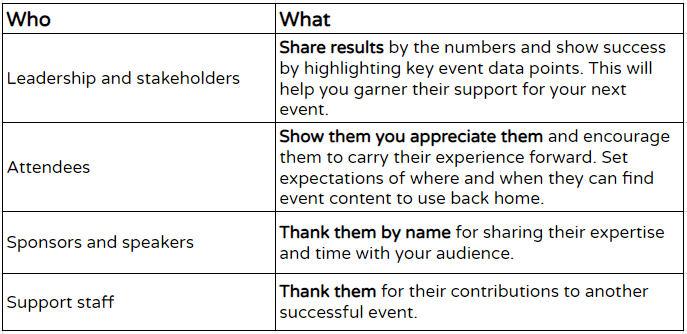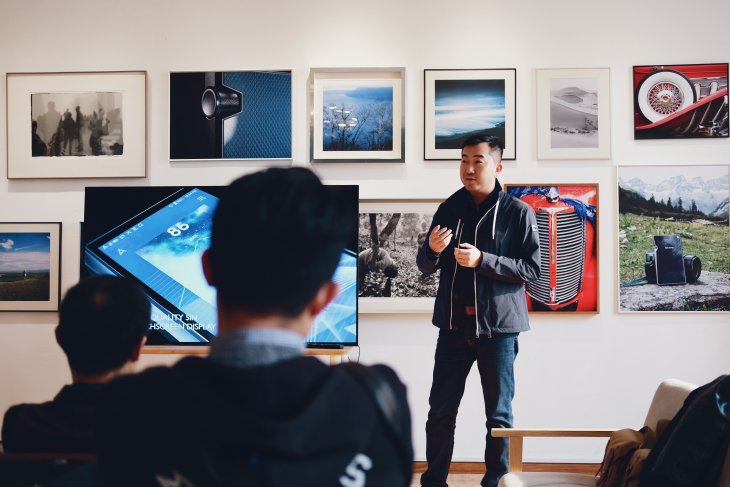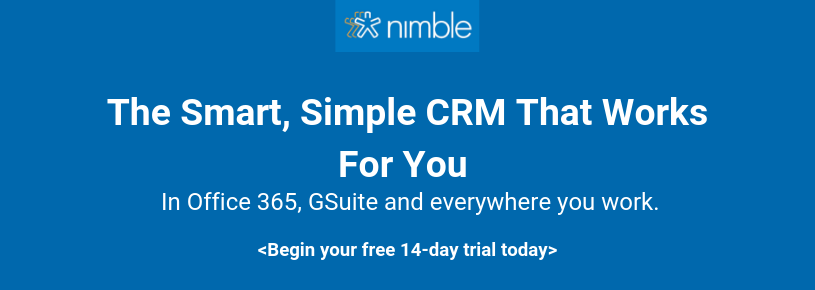Personalization is more than a marketing buzzword— it’s widely accepted as best practice for business communication in today’s economy. It is also expected by consumers due, in large part, to the growing availability of technology to accelerate and optimize customer service and client-vendor relationships.
What does personalization mean and how do you do it? Here we’ll explore the who and when of event messaging: how audience segmentation and personalized content will help you drive desired behaviors (like registration, engagement, and attendee feedback) while creating a great experience for the multiple groups impacted by your event.
Audience segmentation defined
As articulated in a previous post about email marketing trends:
“Segmentation is an email marketing strategy that means splitting the whole list of subscribers into smaller groups according to their distinguishing features and similarities. Segmentation has proven to boost email marketing campaigns significantly: according to research, segmented email marketing campaigns have increased revenue by 760%.”
In context, this means your approach to communication and messaging should vary depending on your audience segments. Segmentation can get quite granular, especially if you’re segmenting based on behavior or shared interests. For the sake of brevity and concision, we will focus on three primary segments and the most easily identifiable ones for registered participants of your event: attendees, partners or sponsors, and speakers.
Each of these audiences will need to know information unique to them leading up to your event, during their time-on-site, and after the event.
6+ months before the event: aspirational messaging
The most successful event planners will agree it’s never too soon to think about marketing your next event. Much of that planning begins when your most recent event concludes.
How can you tap into the momentum of your last event, even as it’s wrapping up, in a way that helps set the tone for your next? Before you can answer that question, you must first think about your audience and the various segments it’s comprised of. Each of these segments, just as they collectively get value from your event, can benefit from having the right event information at just the right time.
If you dive deeply into your audiences, their needs, and their motivations, figuring out what messages to land will be far less challenging for you and your teams. Think of the event experience as a journey: it starts with your audience’s very first introduction to the event, which likely is the marketing messaging you share to drive demand and registration for your event months, to a year, in advance.
Prospective attendees
You’ll want to communicate the following four key details to prospective attendees as soon as they are locked in. These core pieces of information will help you set the tone for your upcoming event and start building demand for it:
- Venue: answers “where will the event take place?”
- Schedule: answers “when will the event happen?”
- Theme: answers “what will the content focus on?”
- Call to Register: includes a link when registration is live.
VIP invitees, sponsors
The people and organizations on your shortlist for sponsorship, partnership, and on-site engagement will want to know all the same key information you share with prospective attendees, and then some. Each recipient on this shortlist likely has their own perception of your event, motivating factors for attending, and expectations about value delivered while they’re on-site.
Remember that attending your event, whether as a participant or a sponsor, is an investment not only of time but capital and human resources as well. Coming to your event means they’re sacrificing time in their office producing work for their organization. The description of your event should speak to those unique factors and to their investment in a way that demonstrates clear value to them (ROI) and their business.

Up to 2 months before the event
As showtime draws nearer and registration numbers increase, your teams are putting more structure around content, experience, and the design for your event. This is a great time to share the latest developments with your audiences.
Registered attendees
- New speakers announced: their name, bio, area of expertise
- Session formats established: keynotes, breakouts, etc.
- Tools and resources: links to the official event website, event mobile app
- CTA: a call to download the event app and complete their profile
Speakers
The speakers who have committed to your event have other obligations in the runup to your event. They run their own businesses and keep full calendars of speaking engagements. This is important to remember as you’ll want to share only what they need to know when they need to know it. In particular, you want to share relevant updates alongside clear calls to action when you need something from them.
Deadlines for presentation decks, content takeaways, and session abstracts are all practical examples of what you might send to speakers. Amplify these key actions with regular reminders to those who have not yet taken the required action. Be sure to include event tools and resources (session builder, event website and app, etc.) to help set them up for success in navigating your event.
Sponsors
This audience segment is likely a sensitive one you’ll want to treat with white gloves. Consider consulting with your sponsorship sales staff to better understand exactly what makes your sponsors tick. Do the same for insights on what drives a great experience for them. Lead with value and benefits and, as with speakers, be strategic about what you share and when. Issue strong and clear calls to action that tie directly to their unique interests in your event.
2-4 weeks before the event
By this point, you have moved beyond core planning and are considering contingencies if things go awry on-site. While you and your teams work through those potential kinks and final touches, take advantage of an opportunity to share updates with registered attendees, speakers, VIP or honorary guests, and your event sponsors:
Attendees
- Detailed agenda with session abstracts
- All planned social and networking activities
- CTA #1: a reminder to download the event app
- CTA #2: check out the attendee list, browse sponsors and exhibitors
Speakers
- All planned social and networking activities
- CTA #1: reminder to download the event app
- CTA #2: check out the attendee list, browse sponsors and exhibitors
VIP or honorary guests
- Short and sweet “save the date” calendar invitations for all planned social and networking activities where they are being featured and will bring them the most value
- Reminders to RSVP for invite-only dinners, meetings, and any planned activities contingent upon their participation
Sponsors
- Registration updates, projected attendance
- Tools and resources for planning their on-site experience
- CTA #1: a reminder to download the event app
- CTA #2: check out the attendee list, browse sponsors and exhibitors
1 week out: pre-on-site communications
Consider setting up rolling or recurring email messages that are sent automatically based on attendee behavior. This close to showtime, shift your focus toward driving pre-event engagement and reinforcing previous calls to action.
Examples of this type of messaging for attendees could include reminders to:
- Download the event app
- Complete their attendee profile
- Explore the attendee list
- Check out sponsors and exhibitors
Your other audiences, including speakers, VIPs, and sponsors will no doubt need reminders as well:
- Speakers: Be brief and concise so it’s clear what they need to do, by when, and who to contact if they need help.
- Special guests: If they have not RSVP’d to your calendar invitations, don’t panic. Instead, send a nudge to their executive administrator or support staff.
- Sponsors: Remind them about any critical expectations you have of them for the on-site experience and share who to contact if they have questions or concerns.

At the event: on-site messaging
Navigating an event can be daunting for attendees once they’ve arrived on-site. They may be so disoriented from being in an unfamiliar space that they forget everything you told them in pre-event messaging. You might also find their patience and attention span reduce dramatically.
As you’re getting your game face on for Day One, consider leveraging your event technology to drive engagement, education, and more as attendees arrive:
Instant notifications via event technology
- Bulletins
- Discussions
- Push notifications
- Audience response (polling, surveys)
Daily emails
- Digest of planned activities
- Personal agenda with session times, locations
- Preview of next day’s sessions and any changes
- “Hot” reminders about social events, networking opportunities

Post-event: highlights, reflections
The best moments at your event will vary depending on individual experience, but you can steer conversations around your event by curating highlights. Leverage moments that speak to the clear success of the event relative to your objectives.
For example, if one of your primary goals is to build a community at your conference, share a photo of a group of attendees collaborating or engaging in conversation with a complimentary caption. Tailor that caption to suit the target audience for your message by using a flattering quote from a participant or a thoughtful anecdote from a session speaker. Take what you know about each of your audience segments— using CRM and event app data— and apply it to post-event messaging.
Showcase event highlights in the context of the audience so that messages feel more personal, meaningful, and relevant to the recipients. Candid and staged photos alike can bring depth to your message and make it feel more personal as well. This approach will yield much better engagement results than a blanket catch-all email blast that feels cold and hard for them to connect with.
Here is one way you might tackle post-event highlights by primary audience segment:

Remember to consider your event from a 360-degree perspective: each group (audience, audience segment) it touches, whether internal or external, has its own unique needs, objectives, and interests.
Click here to learn more from Nimble on leveraging CRM data to personalize your event messaging. Want to get a jump on the latest trends for 2020? Be sure to check on Nimble’s blog post on email marketing trends to follow.


